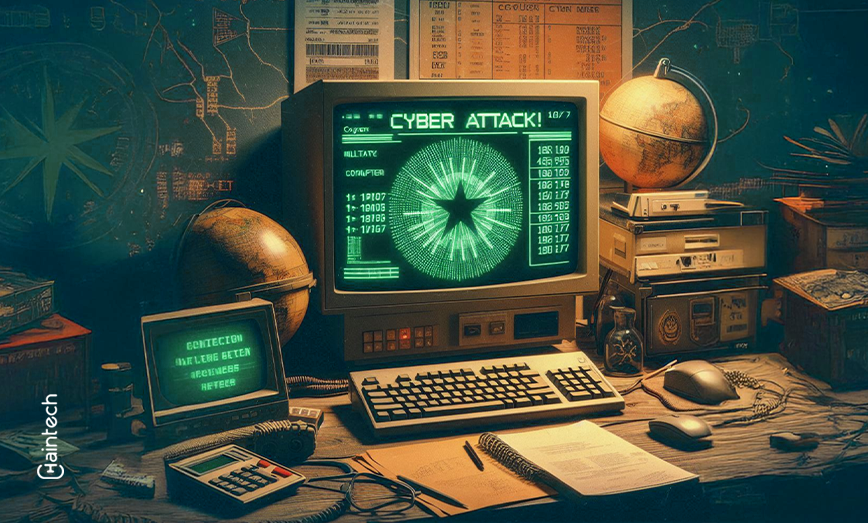1987 MILNET Hack: The Cyber Attack That Shocked the Military

Let’s go back to the year 1987. It is half a decade after the information age began in the United States. The concept of cyber security is also a new one to many. However, a group of hackers mostly from Brooklyn, hacks into the US Department of Defense. This is no ordinary network, it is MILNET, the ‘unclassified’ part of the Department’s networks. There is military intelligence data behind a few keystrokes that were easily accessible to these intruders, the hackers.
How did they manage to do that? And why is this a threat to national security? Then the system was bypassed by packet spoofing that caused it to believe that the cyber criminals were genuine users and hence allowed them access. They infiltrated the military network, exposing glaring weaknesses. If anything, the department of defense had no choice but to review their cyber security strategies if there was to be a resolution to this situation.
Keep reading to discover how the 1987 MILNET Hack affected the way we think about cybersecurity.
How the MILNET Hack Unfolded
The 1987 MILNET Hack wasn’t just a random cyber incident. It was a deliberate strategy. Hackers from Brooklyn discovered a loop hole in the system. But what made this attack so dangerous was the fact that the hackers were able to traverse the system with relative ease. Once inside, they were able to view secret military intelligence information. This was not more an instance of computer hacking for entertainment purposes; it was a clear assault to a nation’s sovereignty.
And the technique that was used? That’s what stunned everybody. In those days packet spoofing was not popular. They fabricated the supposed source address of particular data packets in order to disguise it as coming from a legitimate authority. The system was designed so that it accepted them without having an alarm going off.
Now think: if hackers were able to do so back then, what would be the scenario in near-future? These assumptions gave rise to several questions as to the possibility of military systems being compromised or not.
The Technique Behind the Attack: What Is Packet Spoofing?
Packet spoofing is a method wherein a source address of a packet is tampered with to make it look as though it came from another trusted source. Packet spoofing can be easily illustrated with the help of a postal example. Let’s say, one receives letters from a stalker, but the stamps are different. You assume it’s not a stalker and Think that the sender is a person you trust.
This is precisely what the hackers did against MILNET. By spoofing the packets, they convinced the system that their data was legitimate. Once they were inside, they had access to everything. The scary part? The system didn’t know anything was wrong.
In today’s world, we have more advanced systems to detect these kinds of tricks, but back in 1987, packet spoofing was revolutionary. It exposed a major flaw in how military networks handled data authentication.
The Vulnerabilities Exposed by the 1987 MILNET Hack
The MILNET Hack didn’t just show that the network could be breached—it exposed some serious weaknesses. Before the hack, most people believed that military systems were close to impossible to hack. But this attack proved otherwise.
Here’s a breakdown of the key vulnerabilities that were uncovered:
| Vulnerability | Description |
| Authentication | Hackers used weak authentication protocols to get in. |
| Intrusion Detection | The system did not have a way to detect the hackers quickly enough. |
| Encryption | The data wasn’t well-encrypted, making it easier to access once inside. |
| Access Controls | Hackers could move freely once inside, with little resistance. |
| Security Audits | There wasn’t a routine for checking for these types of vulnerabilities. |
Each of these vulnerabilities showed the Department of Defense that their systems weren’t as secure as they thought. They needed to take action fast to prevent this from happening again.
What Changed After the MILNET Hack?
The 1987 MILNET Hack had a major impact on both military cybersecurity and national security as a whole. A significant asset was taken from the military systems by hackers who accessed them without authorization. This surprised everyone. No one is certain how much information was leaked, but they managed to enter anyhow. It showed that national security could be at risk from cyberattacks.
First, the hackers gained unauthorized access to military systems. This was a huge deal. Even though it’s unclear exactly how much data was exposed, the fact that they got in at all was alarming. It showed that national security could be at risk from cyberattacks.
Next, there was network disruption. The hackers didn’t just steal information—they compromised the availability and stability of the system. MILNET was critical for communication and data exchange within the military. When the system was disrupted, it impacted military operations.
Lastly, this attack led to a serious reevaluation of cybersecurity across the U.S. government. If MILNET could be hacked, what about other networks? The hack raised important questions about how well-protected sensitive systems really were.
What Did the Department of Defense Do?
Once the Department of Defense realized what had happened, they had to act quickly. They couldn’t afford another incident like this. Here’s what they did to improve security after the 1987 MILNET Hack:
- Improved Authentication Protocols
The Department of Defense realized that weak authentication was one of the main reasons the hackers got in. They introduced stronger protocols, including better passwords and multi-factor authentication.
This meant that even if someone tried packet spoofing again, they wouldn’t get very far without proper authentication.
- Intrusion Detection Systems
Once the assault was over, they acknowledged the need for faster detection of such categories of hacking. New intrusion detection systems were therefore introduced.
These mechanisms were aimed at monitoring network traffic and alerting the administrators when something appeared suspicious.
Long-Term Effects: How the 1987 MILNET Hack Shaped the Future of Cybersecurity
Milnet was compromised in 1987 multiple times thereby having a lasting impact on both military and government cyber security fields. In fact, this incident acted as a trigger on cyber safety reflections of our time.
In the first place, more secure military networks were a consequence of the hack. Stronger systems that could endure such incidents in future were built due to this experience. Current encryption methods, multi-factor authentication procedures and periodic assessments are some examples of practices that resulted from it.
Key Lessons from the 1987 MILNET Hack
What can be learnt from the 1987 MILNET Hack? Here are some key takeaways:
- Authentication is Crucial: It was now quite clear to the actors how they gained entry because of poor orthodoxy of authentication. This just goes to show the significance of having a good login approach such as multi-factor authentication.
- Intrusion Detection is Key: If you don’t know that a hack is in progress you can’t prevent it from progressing. The systems are especially useful to identify the signs of intrusion and prevent further activities from these intruders.
- Regular Audits Help Prevent Attacks: One of the reasons why the hackers carried out their plot was because the system lacked an audit to see if it had been available. Security assessment should therefore be done frequently in order that insecure areas are identified before the attacker can use them.
- Cybersecurity Training Matters: Isn’t it incredible that even today, it’s not necessarily about having the proper technology? It will therefore be useful for people to know how to use it. Threat recognizers and their responses are just examples of ways through which prolonged training in cybersecurity can help mitigate against cybersecurity.
A Cybersecurity Wake-Up Call
It was during 1987 when the MILNET Hack happened that everything changed as far as Internet Security was concerned? This incident revealed vulnerability levels within extremely secured systems as well as prompting the Department of Defense to rethink its network protection approaches. It serves as an everlasting reminder that cybersecurity never rests.
The Department of Defense therefore, boosted its defense against any future attacks by amending their authentication protocols; introducing intrusion detection systems; carrying out constant auditing across all the departments. This hack serves as a reminder that no system is completely safe, and we must always be on guard for the next threat.









